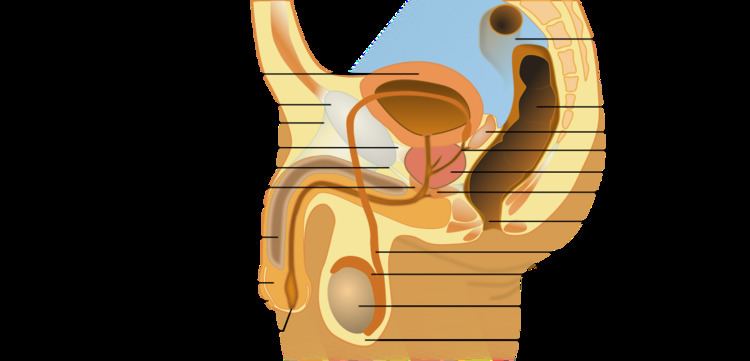Latin Funiculus spermaticus | MeSH A05.360.444.777 | |
 | ||
The spermatic cord is the cord-like structure in males formed by the vas deferens (ductus deferens) and surrounding tissue that runs from the deep inguinal ring down to each testicle. Its serosal covering, the tunica vaginalis, is an extension of the peritoneum that passes through the transversalis fascia.
Contents
Structure
The spermatic cord is ensheathed in three layers of tissue:
Contents
The pampiniform plexus, testicular artery, cremasteric artery, artery of the ductus deferens, lymphatic vessels, testicular sympathetic nerves, and ductus deferens all run deep to the internal spermatic fascia. The ilioinguinal nerve runs on the superficial surface of the external spermatic fascia.
Clinical significance
The spermatic cord is sensitive to torsion, in which the testicle rotates within its sac and blocks its own blood supply. Testicular torsion may result in irreversible damage to the testicle within hours. A collection of serous fluid in the spermatic cord is named 'funiculocele'.
The contents of the abdominal cavity may protrude into the inguinal canal, producing an indirect inguinal hernia.
Varicose veins of the spermatic cord are referred to as varicocele. Though often asymptomatic, about one in four people with varicocele have negatively affected fertility.
